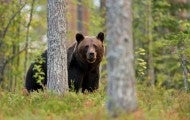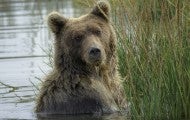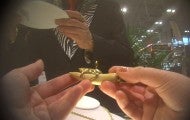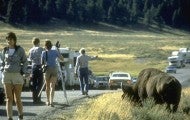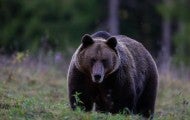A rule proposed by the federal government to reintroduce some of the cruelest of hunting methods to national preserves in Alaska has raised a chorus of outrage from conservation organizations, biologists, elected officials and American citizens, and there is still time to speak out against it. The...
Update 4/20/2022: For the second time, a federal court has rejected trophy hunting interest groups' attempt to legalize the practice of luring Kenai’s revered brown bears with donuts, pastries and other treats only to shoot them dead. Congratulations to our attorneys who have been working for years...
A federal appeals court has agreed that Yellowstone grizzly bears should continue to receive protection under the U.S. Endangered Species Act, ensuring that these iconic American carnivores will not be hunted for trophies. The Ninth Circuit Court of Appeals issued a unanimous opinion today upholding...
In 2019, the Humane Society of the United States and our affiliates delivered many victories for wildlife, here in the United States and globally. We made great strides in protecting giraffes, native carnivores like bobcats and cougars, and marine mammals, including whales and dolphins in captivity...
One of the ways we make a difference for animals is by working on the state and local levels to secure the passage of laws that prevent cruel and inhumane practices that threaten animals—from puppies born in massive puppy mills to coyotes and foxes at risk of coming into the scope of a trophy hunter...
Some threats facing animals can seem too gargantuan to fight. Those are precisely the issues we choose to pursue, and I am immensely proud of our commitment to exposing some of the cruelest practices facing animals all over the world. Canada’s commercial seal slaughter is one of these immense and...
In recent weeks, our organization has answered the call to help animals and people displaced by Hurricanes Helene and Milton in the United States and Hurricane John in Mexico, as well as disasters in India, Viet Nam, Nepal and Ecuador, where we have sent team members or funds to help local organizations. We admire what our colleagues have achieved in this rapid sequence of deployments, and the good they have accomplished, and we are grateful to the nearly 100,000 donors who have recently supported this relief work through the designated Emergency Animal Relief Fund.
We’ve been working on wildlife issues since the 1960s, and we’ve been engaged in the challenges of living and interacting with urban wildlife for almost as long. John Griffin, senior director of urban wildlife programs at the Humane Society of the United States, recently co-authored an essay on urban wildlife. Here he describes the transformative potential of the work we’re doing to promote human-wildlife coexistence.
A recent story in U.S. News and World Report highlighted a simple, creative solution to prevent conflicts with wildlife: The Parks and Outdoors Department in Chattanooga, Tennessee, coated tree trunks with a mixture of sand and latex paint to deter beavers from gnawing on the trees for food and or...




